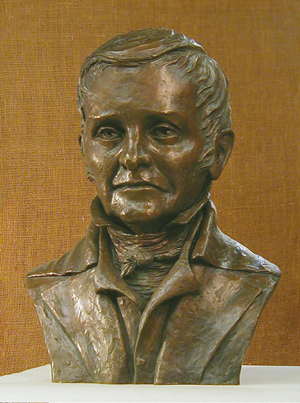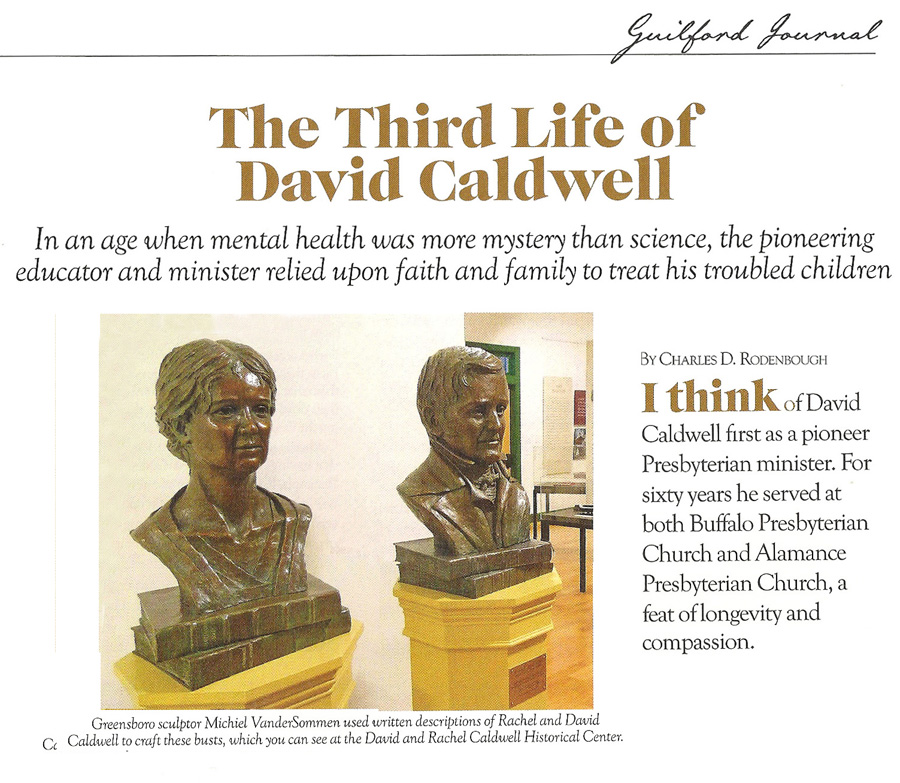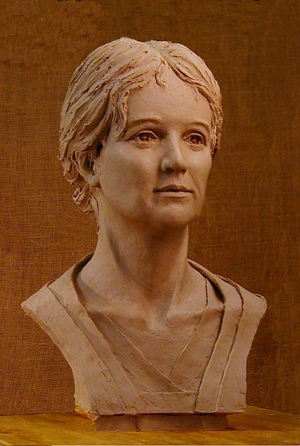David Caldwell and Rachel Caldwell
were commissioned by the Rev. James Walker, a direct descendent, under
the direction of Greensboro Beautiful, Inc. for permanent placement
at David Caldwell Historic Park in Greensboro, NC.
David Caldwell (1725–1824) was a Presbyterian minister, a self-trained
physician, and an early educator in colonial North Carolina. Caldwell
was ordained a Presbyterian minister in 1765 and in 1766, David Caldwell
was called to serve as a minister to two Presbyterian churches, Alamance
and Buffalo, in what was to become Guilford County. One year later,
he opened his academy (“Log College”), an advanced classical
school for young men, near Buffalo Church. It was recognized as one
of the most outstanding schools in the South.
David Caldwell's influence in North Carolina's development was profound.
He attempted to negotiate a peace between the rebellious backcountry
farmers and the Colonial Government during the War of the Regulation
in 1771. Caldwell also served as one of five Guilford County delegates
in the fifth Provincial Congress of 1776. The five delegates were all
members of Buffalo Church. North Carolina's first constitution was adopted
at that Provincial Congress of 1776. Caldwell successfully organized
the adoption of a very restrictive religious test for holding elective
offices in North Carolina.
Throughout the American Revolution, Caldwell was a vocal supporter of
the patriot cause. As a result, he was hunted by British troops during
the 1781 campaign in North Carolina that culminated in the Battle of
Guilford Courthouse. Following the Battle of Guilford Courthouse, the
Caldwells worked tirelessly treating the wounded soldiers of General
Nathanael Greene's army. Caldwell retired from Buffalo and Alamance
Churches in 1820 and continued to educate students until his death in
1824.
The sculpture, which was unveiled during the opening of the Caldwell
Park Interpretive Center in 2007, was created with only one picture
available, but key information was made available from the research
of Gary Brown, and clothing and hair information by Susan Webster of
the Greensboro Historical Museum.



